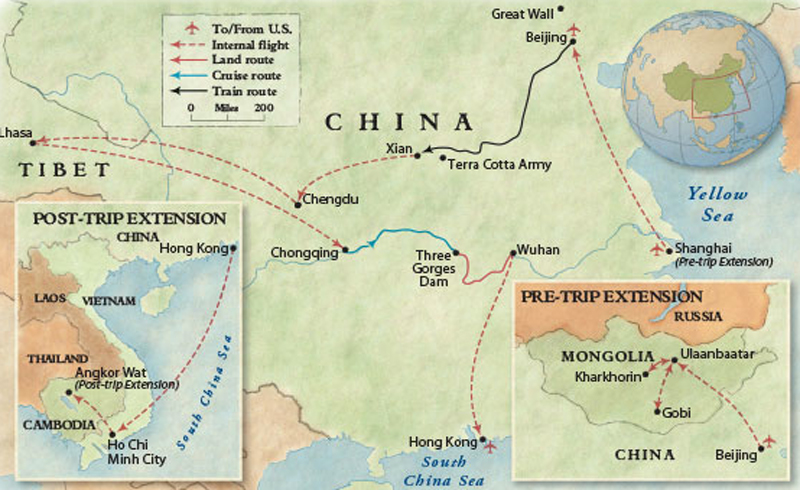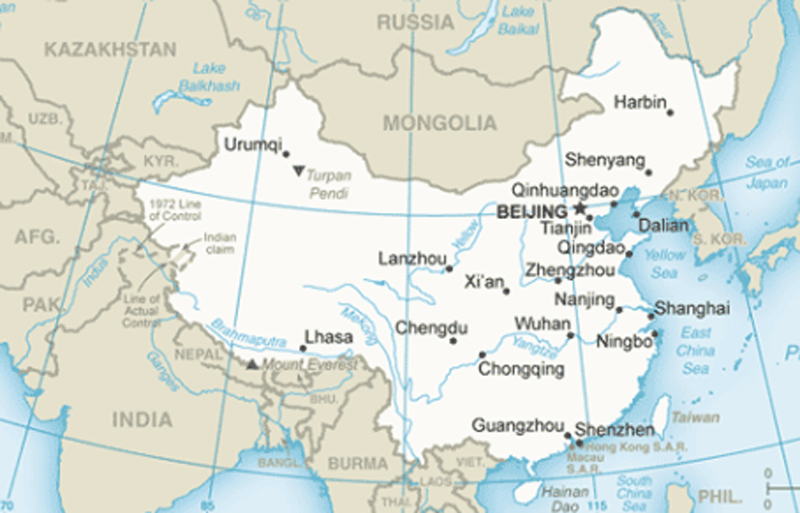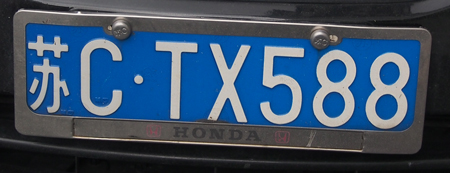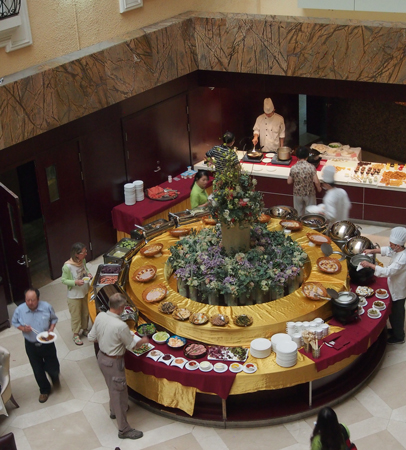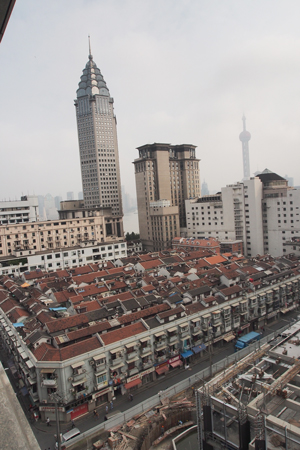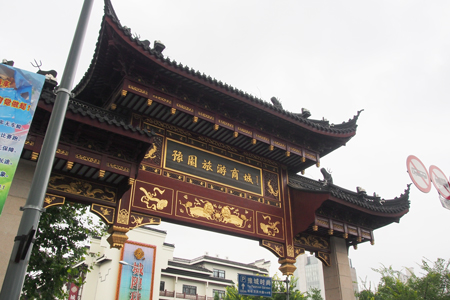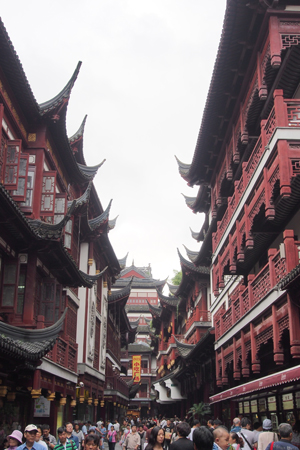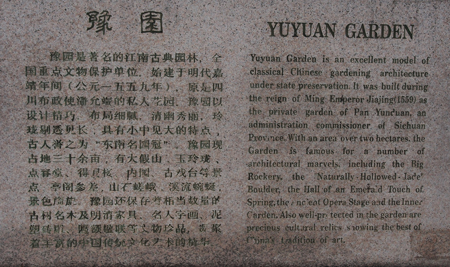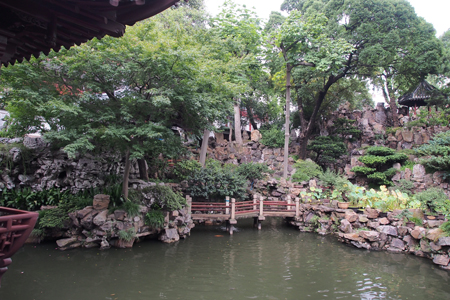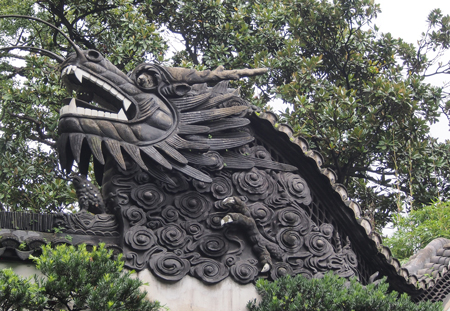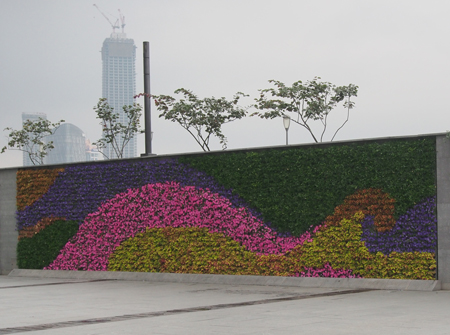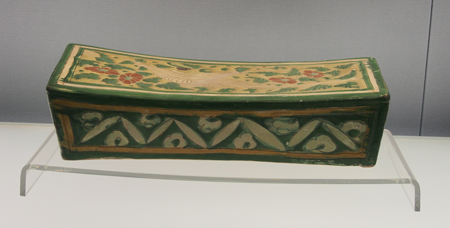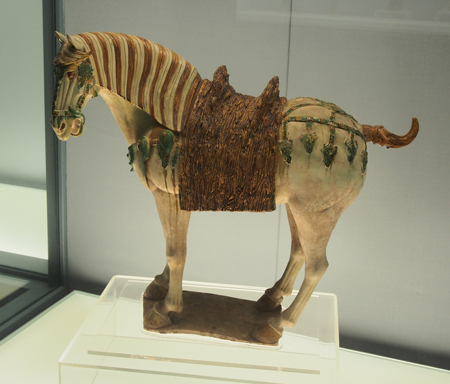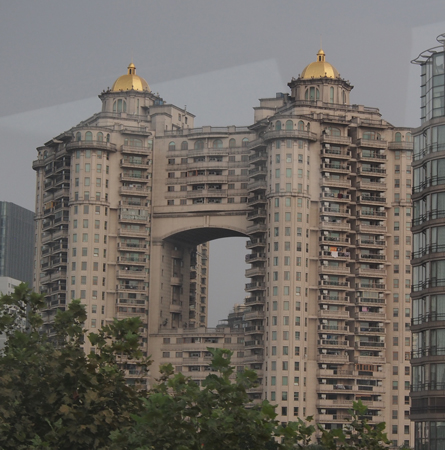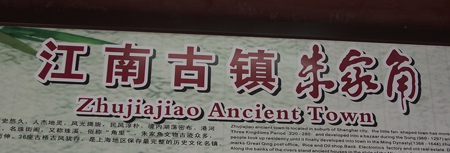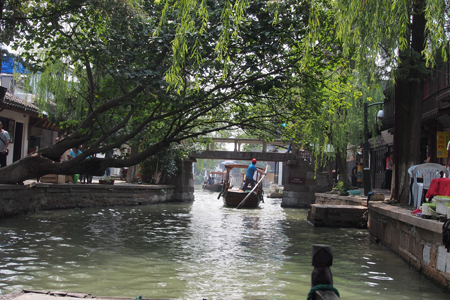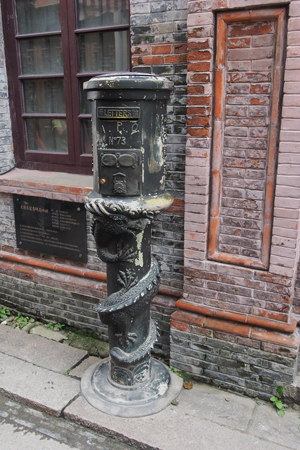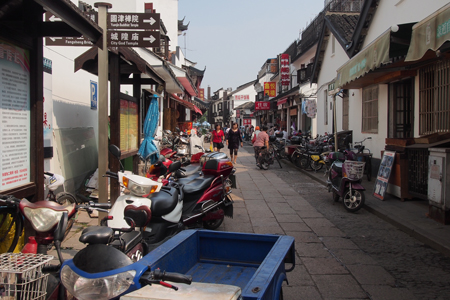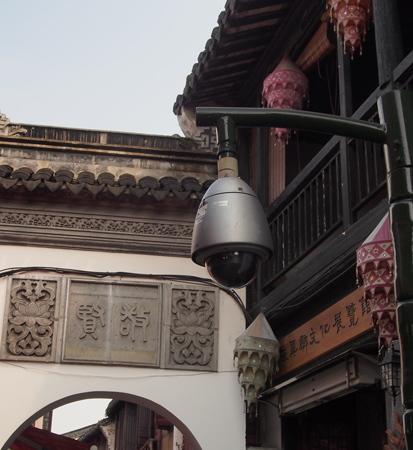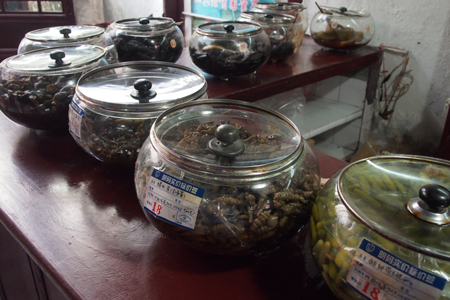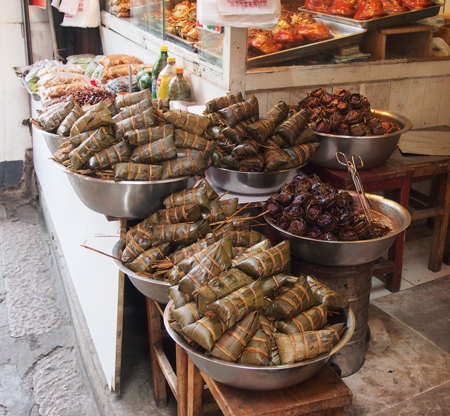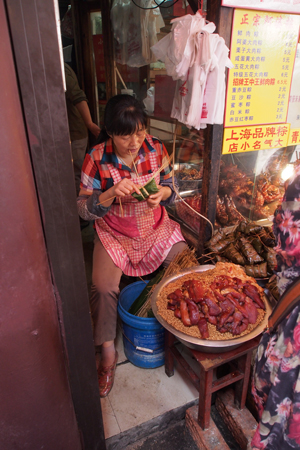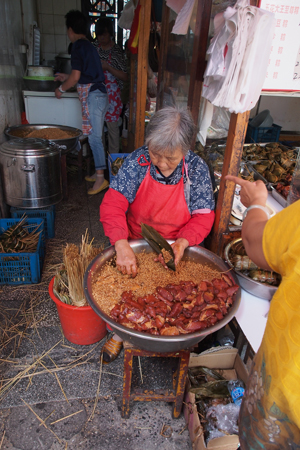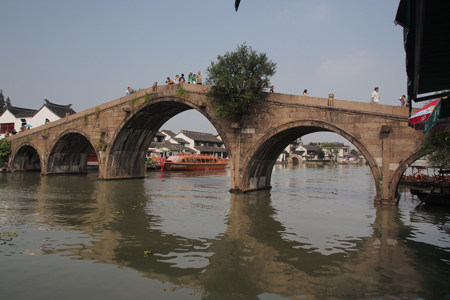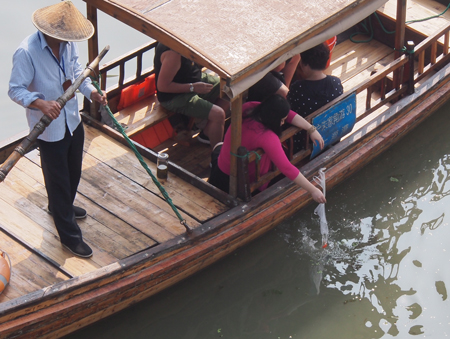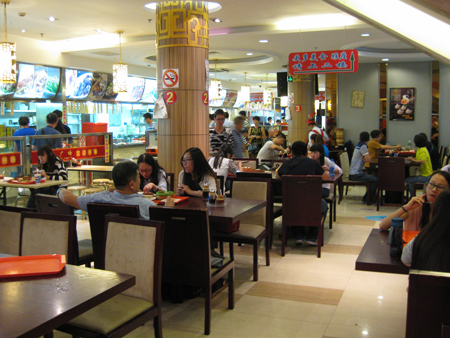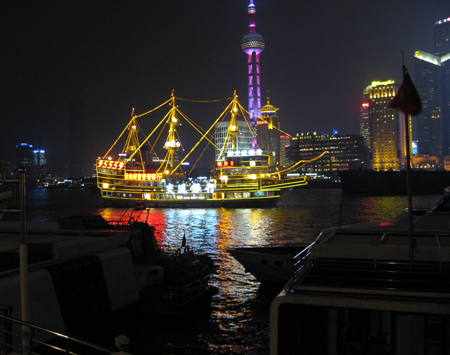Imperial China, Tibet, the Yangtze River, and Cambodia
September 21 to October 22, 2014
Overseas Adventure Travel
This was a very interesting trip from several perspectives. We visited a number of "big bucket list" items: Tiananmen Square; Forbidden City; Great Wall, Terra Cotta Warriors, Three Gorges Dam, Tibet, Potala Palace, Angkor Wat, and others. We experienced at first hand 1.4 BILLION people and to think that by 2030 China is going to be the second most populous country in the world! India is closing fast. The United States is a very distant third, but also growing. I would encourage you to obtain and read Alan Weisman's Countdown: Our Last, Best Hope for a Future on Earth. It is an "eye opener." The size of many Chinese cities is mind-boggling. In general, the food was good, our guides were exceptional, and we learned a lot.
Sun. 9/21 - Tues. 9/23 - Estes Park - Denver - San Francisco - Shanghai
This may be like seeing the world on our way to somewhere and taking three days to do it. However, when we have an early (8:05 AM) flight, we usually spend the night before in Denver, having dinner with the family, and saving 2.5 hours of sleep in the morning. The flights were relatively uneventful. The older 747 from SFO to Shanghai had only 1 TV screen per cabin so no movie choices, etc. - rather boring for a 12-hour flight.
We arrived an hour early in Shanghai – 4:40 PM local time (14-hours difference from Denver). Charlie, our local Shanghai guide, met us at arrival, put us in a cab, and we arrived at the Oriental Bund hotel and met Michael, our OAT tour guide, by 6:30 PM. We opted for sleep rather than another meal and were happy to settle into our nice room after being up for more than 24 hours. Even the very hard Chinese beds were wonderfully comfortable.
Flag of China
The Chinese flag is red, for the blood of the Chinese heroes, a large star for the Communist Party and four small stars for the four categories of people: farmers, military, factory workers, and all the rest.
Typical Chinese license plate - first Chinese character stands for the city or province where the license was issued. The second letter is significant. An A means the car is owned by a politician or government official. B is for buses and taxis. C and up are for private cars. The odd plates that are not blue are also special. If the background is white it belongs to the military. If it is black it belongs to a foreign embassy. The traffic police cannot stop or ticket the A, white, or black plated cars.
Wed, 9/24/14 – Shanghai
Up at 6 AM and starved! We were happy to see the large variety of Chinese and American choices: fried egg, ham, sweet pastries, noodles, cooked cabbage, sweet and sour pork with peppers, banana, yogurt, OJ, and coffee. Everything tasted good and we were no longer starved.
We cannot drink the tap water in the rooms. We get one bottle of water each per day at the hotel and I used our new Steripen to zap a water bottle with UV light to use to brush our teeth. (That will be the scenario for the entire month long trip.)
We had an hour-long orientation meeting at 8 AM and met the seven other members of our pre-trip extension tour here in Shanghai. Our tour director, Michael Yang, is 52 years old and worked in the Chinese foreign affairs office before starting to work as a guide for OAT. He seems to be on top of everything.
At 9:00 we headed out with Charlie and walked two blocks to the old city of Shanghai. The streets are full of people and cars and mopeds but the scene is alive and colorful. Our hotel is in the French area settled by them in the 1850’s, after the Opium Wars opened some coastal cities to foreign trade. The area now is full of street shops selling textile things – cloth, buttons, lace, zippers, etc. – for factory use.
We entered the 700-year-old “old city” under a fancy gate and walked through the Yu Yuan Bazaar – the large market for small commodities and native produce.
We continued walking to the Yu Yuan Garden, a famous ancient garden built between 1559 and 1577. There are over 30 scenic spots, each one different and unique with a zigzag layout of pavilions, terraces, chambers, towers, lotus and koi ponds, little bridges, rockeries, and strange shaped stones. We walked across the zigzag bridge to get to the garden entrance. There are nine turns in the bridge so evil spirits, who cannot turn corners, cannot follow you (the Chinese are VERY superstitious).
There are four necessary elements to a Chinese garden: rocks, water, trees, and pavilions with up-turned corner eaves. The rockeries are formed by gluing interesting stones together to form pleasing arrangements. The glue used 450 years ago was made from a base of sticky rice. There were several dragons in this garden. Chinese dragons spit water (not fire) and are symbols of power. The stroll through the Yu Garden was peaceful even though it was full of people. (We were in lots of Chinese gardens and they all have the same elements.)
Breakfast buffet at our hotel
View from our hotel room
Old City Gate
Old City street scene
Yu Yuan Garden
Zagazig bridge
Rocks and pagoda
Chinese dragon
Next we rode our bus to the flower wall of the Bund. The Bund is the promenade along the Huangpu River that divides east and west Shanghai. Old Shanghai is really an island and contains many 1850’s buildings. A new modern Shanghai financial and business district was built on the other side of the river with 1990’s and newer skyscrapers. The latest tall building still under construction will be 121-floors. The top was in the clouds this morning.
The flower wall has coleus, avinca, and petunias planted in 4-inch pots set in slots in the wall. The colors create pretty, colorful patterns.
Floral wall of the Bund
Sky scrapers of modern Shanghai - Jin Mao Tower, “Bottle Opener” building, Shanghai Tower
In the afternoon we visited the Shanghai Museum, established in 1952. It is one of the four major museums in China. We had the use of audio guides and could proceed at our own pace although most signage was in both Chinese and English. We started on the fourth floor and looked at ancient Chinese jade (many of the pieces were found at burial sites), elaborate Ming and Qing (pronounced ching) furniture, and Chinese currency.
On the third floor we looked at old Chinese paintings, calligraphy, a large collection of oracle bones, bronze items, and stone steles.
The second floor had ceramics on display. I thought the 1100 AD ceramic pillows from the Yuan dynasty and the rather large decorative horses and riders from the Tang dynasty (600 – 900 AD) were exceptional. On the first floor were bronze wine containers and rice bowls from the 18th c. to the 3rd c. BCE. They were quite intricate. There were also many sculptures and statues of Buddhas.
We had an hour rest at our hotel and then walked to dinner in the Yu Bazaar area. We all sat at a large table with a lazy Susan and shared 15 platters of food.
Shanghai Museum
Carved furniture
Ceramic pillow (ouch!)
Ceramic horse
Thurs., 9/25/14 – Shanghai to Zhu Jia Jiao
This morning we had another excellent breakfast and the hot Chinese buffet dishes were different from yesterday, as were the various sweet rolls. It is unusual to have variety from day-to-day at hotel breakfast buffets.
Today we had an hour and ½ bus ride (to go 30 miles!) through Shanghai traffic to visit the “Venice of Shanghai,” Zhu Jia Jiao Village. It is a 1,000-year-old water town with a canal used for transport.
On the way Charlie told us that Mandarin is the official language of China now and it is the language used in business and education. However, there are about 30 regional dissimilar dialects and areas that still speak Cantonese. He also explained about many of the skyscrapers we could see from the “inner ring road.” (Several of the large cities in China have ring roads around the inner city for traffic. They add more ring roads further out as the cities continue to grow. This is a result of cars being accessible to more citizens and farm families being moved into towering apartment buildings as the government takes their land.) Many architects from around the world have won contracts since the 1990’s to build 60 story or higher buildings for businesses and apartments. Every building is unique and very modern. Many have outstanding designs and are interesting to look at individually.
Since people here started being able to buy cars and drive into the city for work or out of the city from their expensive apartments in the city (only since the 1990’s) the traffic appears to be two-way rush hour all day. The original two lane roads became five lanes each way with an elevated limited access road above the middle section. The inner ring was followed by a middle and outer ring and it is still creep and crawl busy. There are 200 km of subways with 12 lines but the new generation of Chinese prefer to drive their nice new cars. It is a status symbol for them. Where they all park is a mystery.
Interesting building at Tomorrow Square
Building with opening demonstrating proper Feng Shui
Zhu Jia Jiao has been a village for 1,000 years. The village and man-made canal is now a tourist attraction. The main attraction beyond the shops, bridges, and canal boat rides is the 100-year-old Ke Zhi Garden. The garden was once the private garden of Mr. Ma, a salt merchant during the Ming dynasty. We entered the gate and passed the Tai Lake rock, which is in the shape of a horse’s head (use your imagination!). The entrance stone in a garden is to keep evil spirits (bad Chi) out because they can only move in a straight line. We strolled around the peaceful gardens with the four elements (rock structures, water ponds, trees, and pavilions) and interesting and varied open views.
Tai Lake rock
We left the garden and took a short boat ride on the canal. A man sculling a long oar out the back powers the boats.
Next we walked an original Qing dynasty post office. China began using postal stamps in 1876 – the dragon stamp. This particular post office was also a “beacon tower” that was used to send smoke signals when invaders came to attack.
Canal boat ride
Original Qing dynasty post box
Models of "beacon towers"
Street scene on our walk to lunch
Big brother must be watching!
Handalong Sauce and Pickle Shop - they have everything you can ever imagine being pickled and some you can't imagine
Zongi or sticky rice dumplings
Lunch wares
Making Zongi
Making Zongi
Our lunch restaurant
400-year-old “setting free bridge”
Woman setting free a goldfish - another Chinese superstition says that you are rewarded for setting free wild animals, fish, and birds - this is called Fang Sheng
Dinner tonight was on our own so we spent $5 each, ate egg rolls, lo main, and broccoli at the Neighbor Restaurant in the Yu Yuan bazaar. We were the only non-Chinese and the only ones with white hair. The food was served cafeteria style. We each took a tray, walked the line picking out what looked good (and recognizable), had the cashier choose a bottle of beer for us, found the chop sticks, and enjoyed the food and the experience. After dinner we walked to the Bund and watched all the light shows on the buildings and the tourist boats. The Bund was full of people all enjoying the colorful lights and the weather. It was a balmy 75°.
Neighbor Restaurant
Bund and Huangpu River at night
| Return to Top | Return to Itinerary | Return to Trips page to view other trips | Return to Dreamcatcher Home Page |
